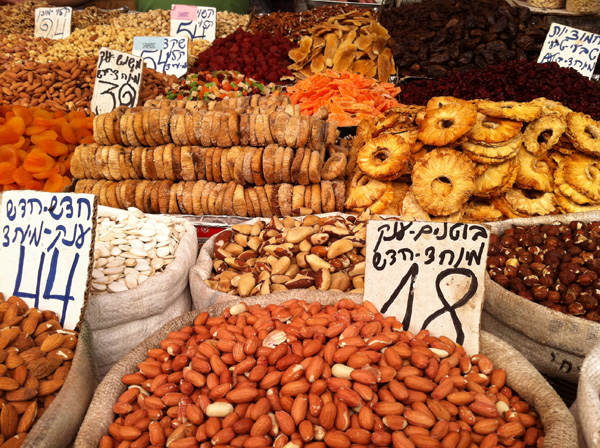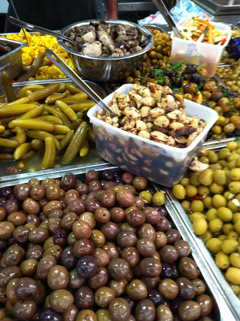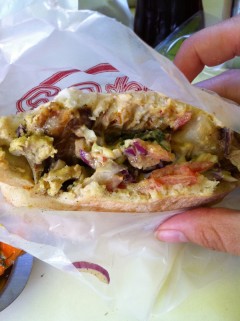Share This
Earlier this month I was lucky enough to visit the beautiful country of Israel for the first time. Arriving in Tel Aviv I was excited and eager to see the historic sites, learn and experience the culture, visit the markets, and of course enjoy some delicious Israeli food. Situated as Israel is on the eastern end of the Mediterranean Sea, it is no wonder the country’s cuisine is heavily influenced by the food traditions of the Mediterranean Diet and the Middle East—including common use of many of the region’s indigenous spices, fruits, vegetables, fish, and grains. However, I was fascinated to learn that Israeli cuisine is an ever-evolving fusion of traditions brought by Jewish immigrants to Israel from around the world, and the traditional foods of the region.
As travelers on a budget, my boyfriend and I shopped for many of our meals at the local open food markets, bargaining for bags of dates, nectarines, olives, breads, spices, fresh hummus and more. Aside from our delicious and affordable fresh finds in the markets, other cheap fare that can be found on every corner of every city and town are falafel (fried chickpea/fava bean balls) and shawarma (shaved lamb, goat, turkey, beef or mixture) wraps, overflowing with fresh veggies, pickled cabbages, yogurt, hummus, and other delicious sauces.
On our last day, we returned to Tel Aviv for a day on the beach and some last minute shopping. Opting to skip a full lunch for more time in the sea, we found our hunger had grown by the time late afternoon rolled around, and a search for the perfect meal for our final feast in Israel began. Remembering the glowing recommendation an Israeli friend had made for a sandwich called sabich earlier in our travels, we quickly had our hearts set. A long-time lover of sabich, this friend told us that there was only one place in all of Israel worth going to for it, which he had excitedly pointed out after taking us on a zigzag journey through the streets of Tel Aviv one week earlier. Using only a small map of the city and our vague memories to guide us, we somehow retraced our steps and stumbled upon this familiar yet ordinary looking sandwich shop, Frishman Sabich to try their famous sabich. With ten people in line ahead of us at 4 PM, we knew we’d found the right place.
A vegetarian’s delight, sabich is a satiating meatless alternative to shawarma, and an interesting alternative to falafel. Hands-down it was the most delicious street food I’ve ever had the pleasure of tasting, and at just 15 Shekels a pop (about $4.30), I don’t know that I’ll ever find a better taste to price ratio anywhere. The sandwich itself was a fresh pita stuffed with thin strips of lightly fried eggplant, hard-boiled egg, potato, tomato, cucumber, onion, parsley, tahini, hummus, amba (pickled mango sauce), and hot sauce. To top it off, we were given bowls filled with pickled cabbage and other vegetables, creating the perfect balance of flavors.
First introduced to Israel by Iraqi Jews who immigrated to the area, sabich was traditionally a breakfast sandwich eaten on Shabbat, but now is enjoyed any day at any time. In recent years sabich has grown in popularity, and it is not uncommon to see long lines at any time of day (like the one we were in). Unfortunately for those living outside of Israel, this widespread popularity is contained to the boundaries of the country, and sabich remains a hidden food gem of Israel. There are a handful of shops in the U.S. that sell sabich, most of which are in New York City. With any luck, the word will spread throughout America, and in time sabich will become the new falafel wrap. -Casey




Add a Comment